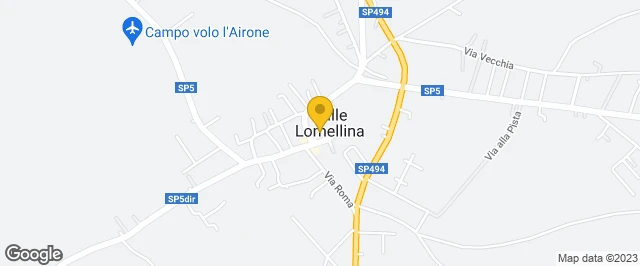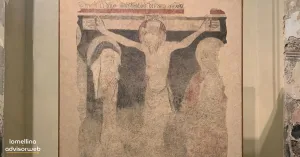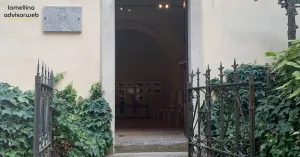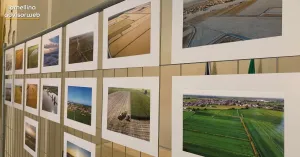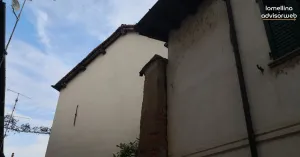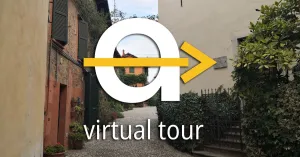La Chiesa di Santa Maria di Castello, il cui anno di fondazione non è noto ma che compare con tale denominazione nell’elenco delle Chiese Lomelline fin dall’anno 1250, prima di diventare di proprietà comunale in tempi recenti, è sempre rientrata tra le proprietà del vicino Castello e, come questo, ha subito trasformazioni, se non in parte ricostruzioni, nel corso del tempo.
Sorta sopra un naturale rialzo del terreno, poco discosta dall’entrata dell’antica rocca, di cui per lunghi secoli svolse le funzioni di cappella, la piccola chiesa mostra ancora oggi strutture tipicamente romaniche, tuttavia ormai quasi completamente cancellate da interventi successivi, stratificandosi nel corso dei secoli.
Le fondazioni più antiche e la parete sinistra possono far pensare a manufatti databili tra i secoli XI e XII, mentre tutto il resto è frutto di adattamenti successivi, tra cui spicca quello settecentesco, patrocinato dai Litta. Dopodiché la chiesa, insieme al castello, imboccò la strada di una rapida decadenza, che la portò ad essere, prima dimenticata, e poi più tardi usata addirittura come ripostiglio di granaglie.
Solo nel 1977, venne deciso il ripristino delle strutture murarie e il rifacimento della pavimentazione. Proprio nel corso di questi lavori vennero casualmente alla luce alcuni affreschi fino a quel momento nascosti sotto una scialbatura.
Così raccontava lo scopritore degli affreschi, il prof. Alberto Ghinzani: "Se non fossi entrato casualmente una decina di anni fa (1977), attratto da queste vecchie mura che parlavano di vicende perse nella memoria dei più ed un segno sull’intonaco non mi avesse incuriosito fino a scoprire cosa si celava oltre lo scialbo, avremmo forse perso una preziosa testimonianza della cultura e dell’arte locale. A poco a poco dai volti e dalle figure emergenti dal vuoto della storia si ricomponeva un ciclo di dipinti così come la fede e l’iconografia religiosa del tempo li avevano fissati sulle pareti."

